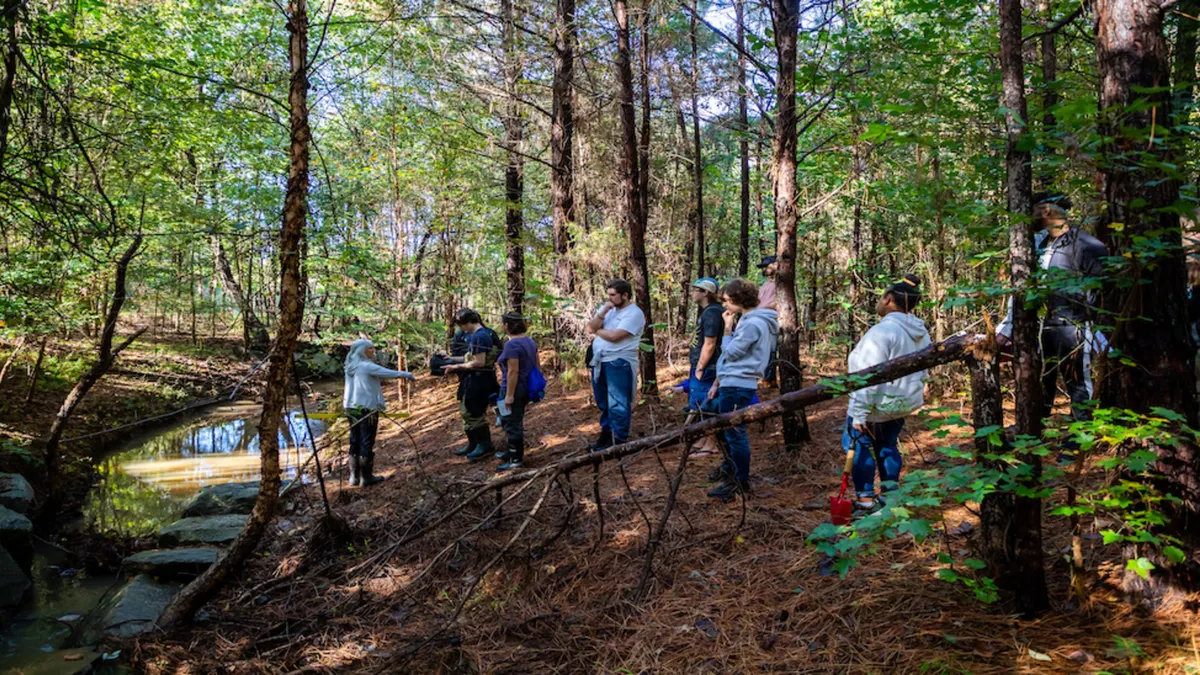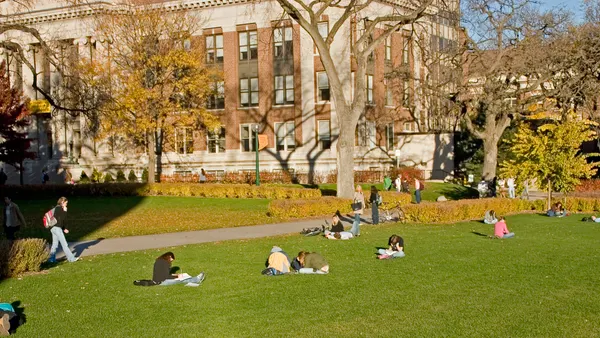Dive Brief:
- Guilford College is scrambling to raise cash and balance its budget amid an anticipated decline in enrollment revenue. The college needs to provide a balanced fiscal 2026 budget by December in order to remain accredited.
- Describing the institution as “between the proverbial rock and a hard place,” Acting President Jean Bordewich said this week in a community message that the institution’s fiscal 2026 budget will “almost certainly” need cost cuts to meet a projected revenue dip.
- Bordewich also listed recent wins for the private North Carolina college, including fundraising progress and a June conservation agreement with the Piedmont Land Conservancy worth some $8.5 million.
Dive Insight:
Come December, Guilford will have been on probation with the Southern Association of Colleges and Schools Commission on Colleges for two years due to financial issues. That’s the maximum time allowed for an institution to be on probation with good cause, per the accreditor’s policy.
To stay accredited, the historically Quaker college must show it has the financial resources and ability to manage them to sustain its mission. That in part will require Guilford to submit a balanced budget for fiscal year 2026 to SACSCOC. Accreditation loss would mean Guilford would no longer be eligible to receive federal student aid funds.
“Progress is being made, but we must plan for multiple contingencies,” Bordewich said this week. “Balancing the cash and accrual budgets is non-negotiable.”
Given that, the college has been on the hunt for cash. The “For the Good of Guilford” fundraising campaign, launched in March, aims to raise $5 million in unrestricted cash to support the college’s operations. The college so far has raised just under $3.8 million toward the $5 million goal. But that still leaves some $1.2 million to go.
The same day Bordewich issued her message, Wess Daniels, director of Guilford’s Friends Center and Quaker Studies, published a plea to alumni, noting that their donations were “needed now more than ever.”
Daniels drew a parallel between today’s “crisis” and a similar episode of financial distress for the college in 1918.
“Guilford's current crisis mirrors 1918 in striking ways,” Daniels wrote. “Once again, the college faces financial uncertainty. Once again, we ask: Who gave us Guilford College? And more importantly: Who will ensure it continues?”
Along with fundraising, Guilford’s agreement with Piedmont Land Conservancy is set to bring cash into its coffers. Under the memorandum of understanding, the college would retain ownership of 120 acres of land known as the Guilford Woods, while the conservation organization will purchase the development rights once it raises $8.5 million.
“The land will be permanently protected, Guilford College will receive vital financial support for its programs, and the public will gain official access to pristine green space in a rapidly growing part of Greensboro,” Mary Magrinat, incoming president of the conservancy, said in a statement. Bordewich described the land as one of the few large privately owned hardwood forests in Greensboro.
The proceeds from the agreement will likely be available by 2028, the college has said.
Founded by North Carolina Quakers in 1837, Guilford has suffered from declining enrollment in recent years along with many other private liberal arts colleges. Between 2018 and 2023, fall headcount declined 23.4% to 1,208 students. And that number is down 57.3% from 2010.
With the shrinking student body has come financial struggle. In fiscal 2024, the college reported a total operating deficit of $2.4 million.
As it tries to rein in its budget, the college is working toward a strategy to recruit students with less tuition discounting and to ramp up its adult education programs — which once reached 1,300 students but have diminished to serve just 50 — among other efforts.
In her message this week, Bordewich noted “positive news” in that the college is expecting a $2 million surplus for its fiscal year 2025 cash operating budget.














